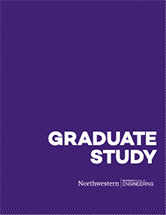An Inspiring Underwater Experience
Ishani Narwankar (MSR '24) applied lessons learned from her MSR independent project to her internship with MBARI, a non-profit research institution where scientists and engineers work together to explore and study the sea.

Ishani Narwankar (MSR '24) wants to be an “ultralearner.”
In her eyes, ultralearning means to pursue intense project-based learning in order to develop and improve skills and applied knowledge.
Northwestern Engineering's Master of Science in Robotics (MSR) program is helping her on that quest.
Narwankar began MSR after earning her bachelor of science degree in aerospace engineering at the University of Texas at Austin. There, she learned about autonomous aerial robotics, satellite-based navigation, and controls. She knew she wanted to learn how to apply those concepts in a completely different environment, and learn new skills along the way to prepare her for a career in robotics.
She's done that — and more — so far during her time in MSR.
For her winter independent project, Narwankar focused on Simultaneous Localization and Mapping (SLAM) in water. Her goal was to create an autonomous system that could traverse and map an underwater environment without running into any obstacles. The thought was the system could eventually be used for directed search and inspection needs.
The project became an ultralearning experience for Narwankar.
"I learned that you have to be very willing to come up with some innovative solutions to problems you might not have thought would arise," she said. "I honestly think that's what this program is all about: finding new solutions to these problems that arise — often either in code or with the hardware we work with."
Narwankar's project also was preparation for her summer internship at California-based Monterey Bay Aquarium Research Institute (MBARI), a non-profit where scientists and engineers work together to explore and study the sea. She spent 10 weeks looking to improve a sonar-based simultaneous localization and mapping (SLAM) algorithm. During that time, Narwankar researched, developed, and tested different classical and machine learning-based point cloud registration methods to create complete maps of an environment.
She routinely found herself relying on lessons learned from her independent project.
"I was lucky that the learned knowledge from my project transferred to the work at MBARI really well," she said. "My winter project gave me a wonderful foundation for what autonomous underwater vehicles and remotely-operated vehicles (ROV) are like, how they navigate underwater, what sensors they rely on, and what parameters are necessary for them to work autonomously."
Narwankar also went out on MBARI's research vessel — the Rachel Carson — to observe and assist with deployments and tests in the Monterey Canyon.
"Being able to do field work and observe the testing of these systems that engineers and scientists are actively developing at MBARI was fascinating," she said. "Hearing the discourse between ROV pilots, engineers, and scientists in the control room of the Rachel Carson felt very special to me. It made me realize that I really enjoy the work that I am doing and learning more about in the MSR program."
Narwankar's project was one of 18 internship projects at MBARI this summer. Five of the projects were engineering related, while the rest focused on the natural sciences. Collaborating with and getting to know her fellow interns helped Narwanker develop new insight about marine life. It also helped her appreciate how robotics interacts with a wide range of industries.
It's a lesson she continues to rely on during her ultralearning experience in MSR.
"Robotics is an extremely interdisciplinary field," she said. "I feel as though I'm making the most of my time in MSR by playing into that 'interdisciplinary-ness' and working on little projects here and there that acknowledge the other applications of robotics."

